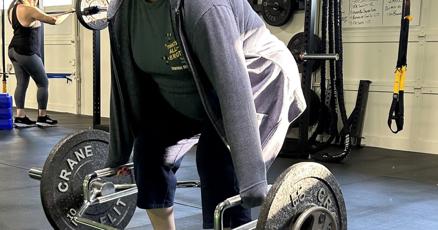Best Low-Impact Exercises to Stay Fit and Healthy
In today’s busy world, people have become more conscious of their health and fitness. Regular exercise is essential for staying fit and healthy, but high-impact exercises can be tough on the body, especially for those with joint problems. Low-impact exercises are a great alternative to high-impact exercises and offer numerous health benefits. In this article, we will discuss the five best low-impact exercises to stay fit and healthy.
1. Walking
Walking is one of the best low-impact exercises that you can do anywhere, anytime. It is a great way to improve cardiovascular health, strengthen muscles, and burn calories. Regular walking also helps to reduce stress, lower blood pressure, and improve overall fitness. Start by walking for 10-15 minutes a day and gradually increase your walking time to 30 minutes or more per day.
2. Swimming
Swimming is an excellent low-impact exercise that provides a full-body workout. It is ideal for those with joint problems or injuries as it puts less stress on the joints. Swimming is also a great way to improve cardiovascular health, strengthen muscles, and increase flexibility. Swimming for 30 minutes three times a week is an excellent way to stay fit and healthy.
3. Cycling
Cycling is a low-impact exercise that is ideal for improving cardiovascular health, burning calories, and strengthening leg muscles. It is also a great way to get outdoors and enjoy the fresh air. Cycling can be done indoors on a stationary bike or outdoors on a regular bicycle. Start by cycling for 10-15 minutes a day and gradually increase your cycling time to 30 minutes or more per day.
4. Yoga
Yoga is a low-impact exercise that focuses on flexibility, balance, and strength. It is a great way to reduce stress, improve posture, and increase overall fitness. Yoga can be done at home or in a studio with a qualified instructor. There are many different types of yoga, including hatha, vinyasa, and power yoga, so find the one that suits you best.
5. Pilates
Pilates is a low-impact exercise that focuses on building core strength, improving flexibility, and toning muscles. It is a great way to improve posture, balance, and coordination. Pilates can be done at home or in a studio with a qualified instructor. It is important to start with beginner-level classes and gradually work your way up to more advanced classes.
6. Elliptical training
Elliptical machines provide a low-impact, full-body workout that can help improve cardiovascular health, build muscle strength, and burn calories. They are a good option for people who want to get a good workout without putting too much stress on their joints.
7. Tai Chi
Tai Chi is a low-impact exercise that combines slow, gentle movements with deep breathing and meditation. It can help improve balance, flexibility, strength, and overall well-being.
8. Indoor cycling
Cycling can be done indoors on a stationary bike. It is a low-impact exercise that is great for improving cardiovascular health, building leg strength, and burning calories.
9. Bodyweight exercises
Bodyweight exercises, such as squats, lunges, push-ups, and planks, can be done indoors with no equipment. They are a great way to build strength, improve flexibility, and burn calories.
10. Dancing
Dancing is a low-impact exercise that can be done indoors and is a fun way to get moving. There are many different types of dance, from ballet to hip hop to ballroom dancing.
FAQs
What is a low-impact exercise?
A low-impact exercise is an exercise that puts less stress on the joints than high-impact exercises. Examples of low-impact exercises include walking, swimming, cycling, yoga, and Pilates.
Are low-impact exercises suitable for everyone?
Yes, low-impact exercises are suitable for most people, especially those with joint problems or injuries. However, it is always important to consult with your doctor before starting any exercise program.
How often should I do low-impact exercises?

